39 what are trans fats called on labels
en.wikipedia.org › wiki › FatFat - Wikipedia The most common type of fat, in human diet and most living beings, is a triglyceride, an ester of the triple alcohol glycerol H(–CHOH–) 3 H and three fatty acids. The molecule of a triglyceride can be described as resulting from a condensation reaction (specifically, esterification) between each of glycerol's –OH groups and the HO– part of the carboxyl group HO(O=)C− of each fatty ... en.wikipedia.org › wiki › Trans_fatTrans fat - Wikipedia Trans fat, also called trans-unsaturated fatty acids, or trans fatty acids, is a type of unsaturated fat that naturally occurs in small amounts in meat and milk fat. It became widely produced as an unintentional byproduct in the industrial processing of vegetable and fish oils in the early 20th century for use in margarine and later also in snack food, packaged baked goods, and for frying fast ...
Trans Fats, Health and Nutritional Labeling of Foods Since 2006, food manufacturers have been required to include trans fat content information on the Nutrition Facts label on the packages. Currently, food manufacturers are allowed to make "trans free" or "no trans" claims if the amount of trans fat in the product is less than 0.5 g trans fat per serving.

What are trans fats called on labels
Fat - Wikipedia In animals, adipose tissue, or fatty tissue is the body's means of storing metabolic energy over extended periods of time. Adipocytes (fat cells) store fat derived from the diet and from liver metabolism.Under energy stress these cells may degrade their stored fat to supply fatty acids and also glycerol to the circulation.These metabolic activities are regulated by several hormones … Trans Fats | American Heart Association Artificial trans fats (or trans fatty acids) are created in an industrial process that adds hydrogen to liquid vegetable oils to make them more solid. The primary dietary source for trans fats in processed food is "partially hydrogenated oils." Look for them on the ingredient list on food packages. Trans fat - Wikipedia Trans fat, also called trans-unsaturated fatty acids, or trans fatty acids, is a type of unsaturated fat that naturally occurs in small amounts in meat and milk fat. It became widely produced as an unintentional byproduct in the industrial processing of vegetable and fish oils in the early 20th century for use in margarine and later also in snack food, packaged baked goods, and for …
What are trans fats called on labels. Dietary fats explained: MedlinePlus Medical Encyclopedia 13.7.2020 · Trans fatty acids are unhealthy fats that form when vegetable oil goes through a process called hydrogenation. This leads the fat to harden and become solid at room temperature. Hydrogenated fats, or "trans fats," are often used to keep some foods fresh for a long time. Trans fats are also used for cooking in some restaurants. Nutrition: Trans fat - World Health Organization Trans fat, or trans-fatty acids, are unsaturated fatty acids that come from either natural or industrial sources. Naturally-occurring trans fat come from ruminants (cows and sheep). ... While including trans fat levels on labels is important, health claims such as "trans fat free" should not be allowed unless other specific food criteria ... › health › ways-to-avoid5 Ways to Avoid Hydrogenated Oil - Healthline Aug 16, 2022 · According to the U.S. Food and Drug Administration (FDA), a company can label a food free of trans fats if the actual content is 0.5 grams per serving or less. This isn’t the same as 0 grams ... Understanding the FDA's Trans Fat Label Requirements Naturally occurring trans fat is made in the gut of some animals, resulting in a small amount of trans fat in dairy and meat products. Artificial trans fats are a type of fat that is made in a laboratory through a processes called partial hydrogenation. Hydrogen is added to oils to make them more solid. Why are trans fats in food?
Small Entity Compliance Guide: Trans Fatty Acids in Nutrition Labeling ... Trans fatty acids should be listed as " Trans fat" or " Trans " on a separate line under the listing of saturated fat in the nutrition label. Trans fat content must be expressed as grams per... 5 Ways to Avoid Hydrogenated Oil - Healthline 16.8.2022 · Hydrogenation is a process in which a liquid unsaturated fat is turned into a solid fat by adding hydrogen. It's best to avoid foods with hydrogenated oil because they contain trans fats, which ... trans fats - North Carolina State University Food and Drug Administrion News Release, July 9, 2003 " Under the new FDA regulations, by Jan. 1, 2006, consumers will be able to find trans fat listed on food nutrition labels directly under the line for saturated fat. The new information is the first significant change on the Nutrition Facts panel since it was established in 1993." The 4 Types of Fats, Explained - Real Simple 4.3.2021 · The worst type of dietary fat are trans fats, which are a byproduct of a process called hydrogenation that is used to turn healthy oils into solids and prevent them from becoming rancid. Trans fat has no known health benefits and there is no safe level of consumption, which is why it has been officially banned in the United States and many other countries.
Trans fat is double trouble for heart health - Mayo Clinic 23.2.2022 · Unlike other dietary fats, trans fats — also called trans-fatty acids — raise "bad" cholesterol and also lowers "good" cholesterol. A diet laden with trans fats increases the risk of heart disease, the leading killer of adults. The more trans fats eaten, the greater the risk of heart and blood vessel disease. IELTSDATA READING PASSAGE 52-Trans Fatty Acids A recent editorial in the British Medical Journal (BMJ), written by researchers from the University of Oxford has called for food label to list trans fats as well as cholesterol and saturated fat. Trans fats (or trans fatty acids) are a type of unsaturated fatty acid. They occur naturally in small amounts in food produced from ruminant animals ... What Are Fats? | Cardiac College - Health e-University We can only get these fats by eating them. These fats are called “essential” fats because it is essential that we get them from food. Essential fats include Omega-3 fats (found in foods such as fish and flax seed) and Omega-6 fats (found in foods such as nuts, seeds, and corn oil). There are three main types of fat in the foods you eat: › trans-fat › art-20046114Trans fat is double trouble for heart health - Mayo Clinic Feb 23, 2022 · Unlike other dietary fats, trans fats — also called trans-fatty acids — raise "bad" cholesterol and also lowers "good" cholesterol. A diet laden with trans fats increases the risk of heart disease, the leading killer of adults. The more trans fats eaten, the greater the risk of heart and blood vessel disease.
› types-of-fats-guideThe 4 Types of Fats, Explained - Real Simple Mar 04, 2021 · Therefore, while food companies are reducing the amount of trans fat in their products, a number of foods still contain artificial trans fats. The most common sources of trans fats include commercially-produced cakes, pies, frosting, creamy fillings, fried foods, and cookies made with shortening or hydrogenated fat. Fatty cuts of meat and full ...
diabetes.org › recipes-nutrition › eating-wellFats | ADA - American Diabetes Association Trans fats are listed on the Nutrition Facts label, making it easier to identify these foods. However, keep in mind that if there isn’t at least 0.5 grams or more of trans fat in a food, the label can claim 0 grams. To avoid as much trans fat as possible, you should read the ingredients list on food labels. Look for words like hydrogenated ...
Food Labels: Fat & Cholesterol | Home & Garden Information Center As a result, total fat, saturated fat, trans fat and cholesterol are required under the Nutrition Facts panel of food labels. Information on the content of polyunsaturated and monounsaturated fat is optional. The Nutrition Facts label shows you how much fat is in a product, even if the fat is hidden as an ingredient.
What Are Trans Fats? Food Sources, Decoding Labels - WebMD If the Nutrition Facts label says the product has "0 g trans fat," that doesn't necessarily mean it has no trans fats. It could have up to half a gram of trans fats per serving. It could have up ...
Consumer Updates | FDA - U.S. Food and Drug Administration 28.7.2022 · The .gov means it’s official. Federal government websites often end in .gov or .mil. Before sharing sensitive information, make sure you're on a federal government site.
What Are Trans Fats, and Are They Bad for You? - Healthline Trans fats, or trans-fatty acids, are a form of unsaturated fat. They come in both natural and artificial forms. Natural, or ruminant, trans fats occur in the meat and dairy from ruminant animals,...
Trans Fat | FDA - U.S. Food and Drug Administration Most of the trans fat in the foods we eat is formed through a manufacturing process that adds hydrogen to vegetable oil, which converts the liquid into a solid fat at room temperature. This process...
What are "trans-fats?" - USDA Trans fat is a specific type of fat that is formed when liquid oils are turned into solid fats, such as shortening or stick margarine. During this process called 'hydrogenation', hydrogen is added to vegetable oil to increase the shelf life and flavor stability of foods.
Fats | ADA - American Diabetes Association Trans fat. Trans fats are produced when liquid oil is made into a solid fat—a process called hydrogenation. Like saturated fat, trans fat can be damaging to blood cholesterol levels. It is more harmful than saturated fat, and for a heart-healthy diet, you want to eat as little trans fat as possible by avoiding foods that contain it.
7 Foods That Still Contain Trans Fats - Healthline Trans fats are a form of unsaturated fat, which can be classified as either natural or artificial. Natural trans fats are formed by bacteria in the stomachs of cattle, sheep, and goats. Beef, lamb,...

AP story on trans fats ban: Strong on sourcing, but left out key detail about study findings ...
Trans Fat Data to Be Added to Food Labels - The New York Times In 1994, the center called on the F.D.A. to add trans fats to the nutrition label. Five years later, the agency agreed, but postponed the change until it had considered the Institute of Medicine ...
Trans Fats | Cardiac College - Health e-University Hydrogenation can also improve the texture of the product. Look for "partially hydrogenated" or "hydrogenated" oils or fats on the ingredients list on the food label. If either of these fats or oils is on the label it means that there is trans fat in the product. Learn more about reading food labels » Foods with trans fats
Benefits of the Danish transfat ban for coronary heart disease ... 18.8.2022 · But I don't think there are any dangers to poly unsaturated fats other than them easily turning into trans fats, so as long as factories are banned from making them into trans fats it should be fine. Or really the opposite, poly unsaturated fats are the healthiest fats, omega 3 and omega 6 and so on belongs to this group, just be sure to treat it carefully and don't let it turn to …
F.D.A. Calls for Listing 'Stealth Fat' on Labels - The New York Times The regulation covering the fats, called trans fatty acids, or just trans fats, would be the first significant change in nutrition-facts labels since the agency began requiring them in 1993.
Reading Passage 1 - Trans Fatty Acids - IELTS Oracle Reading Passage 1 - Trans Fatty Acids. You should spend about 20 minutes on Questions 1-13, which are based on Reading Passage 1 below. A recent editorial in the British Medical Journal (BMJ), written by researchers from the University of Oxford, has called for food labels to list trans fats as well as cholesterol and saturated fat.
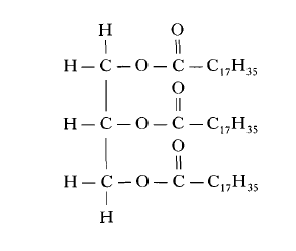

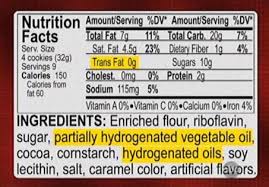
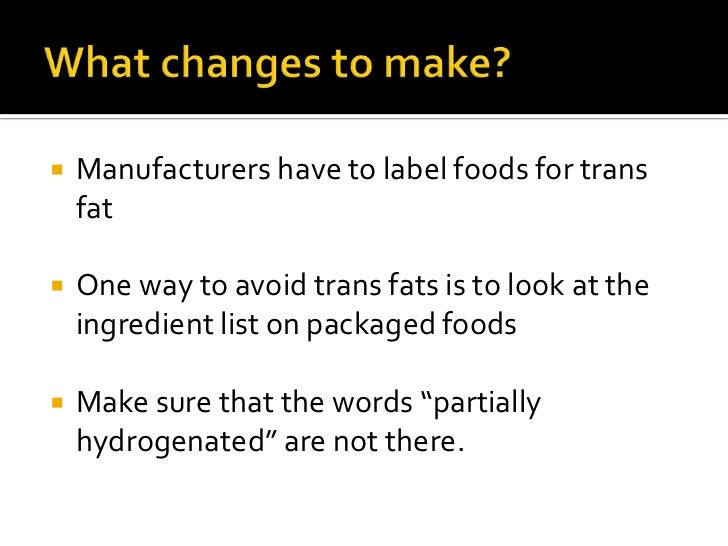

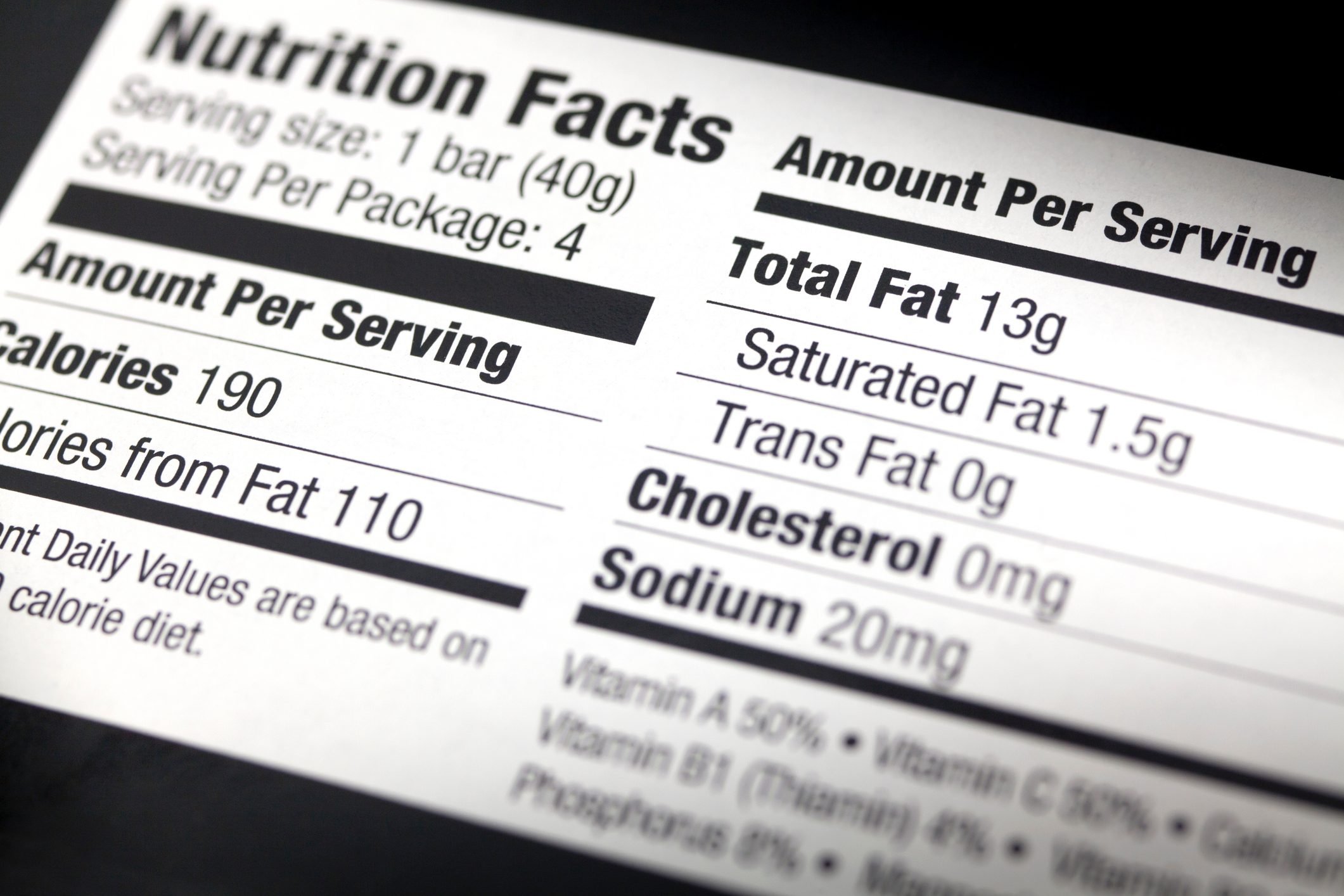
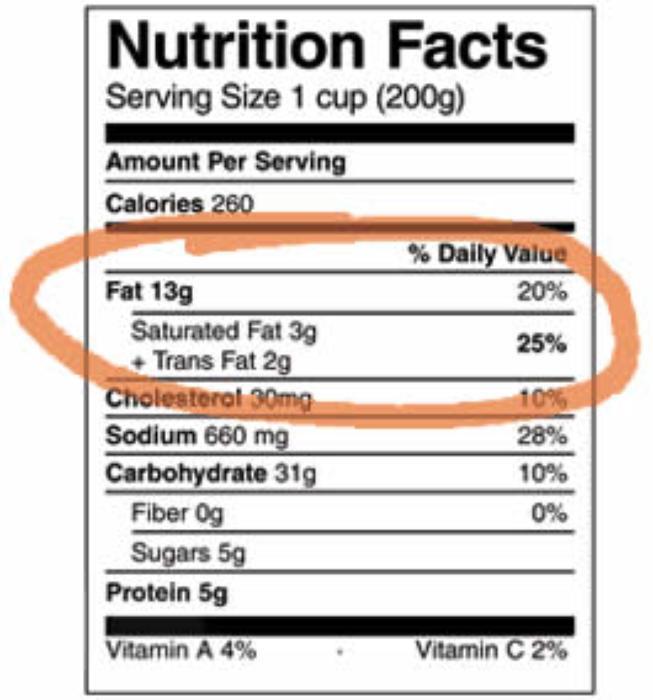
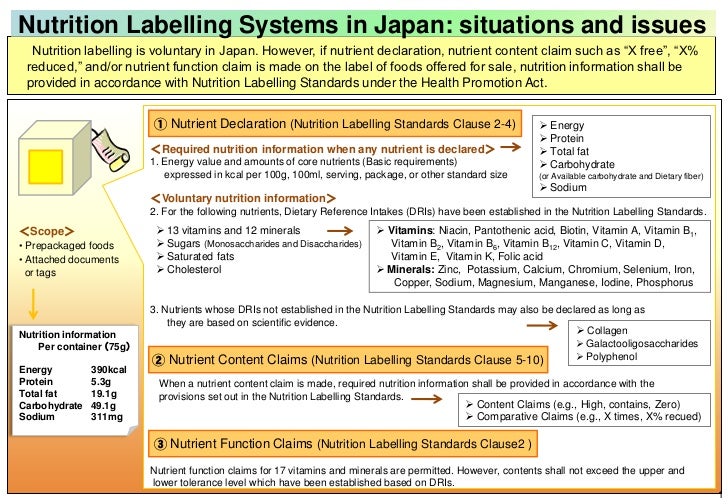
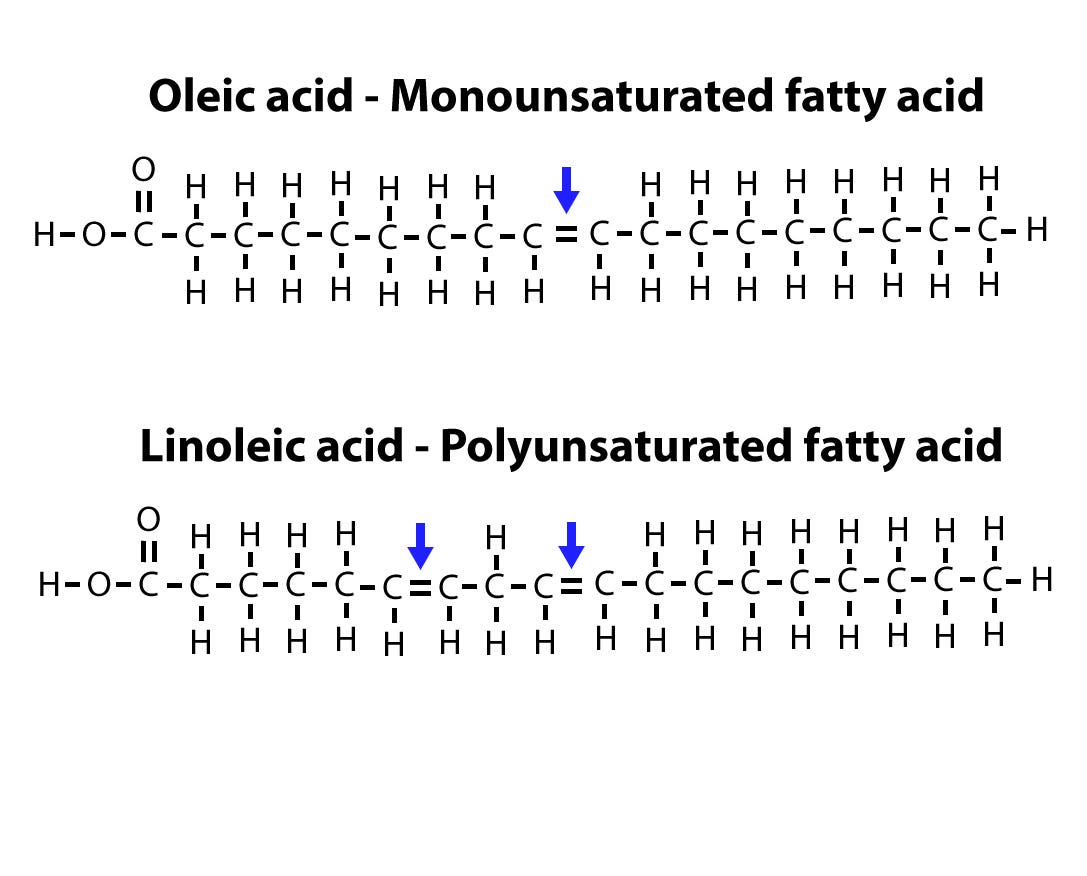

Post a Comment for "39 what are trans fats called on labels"